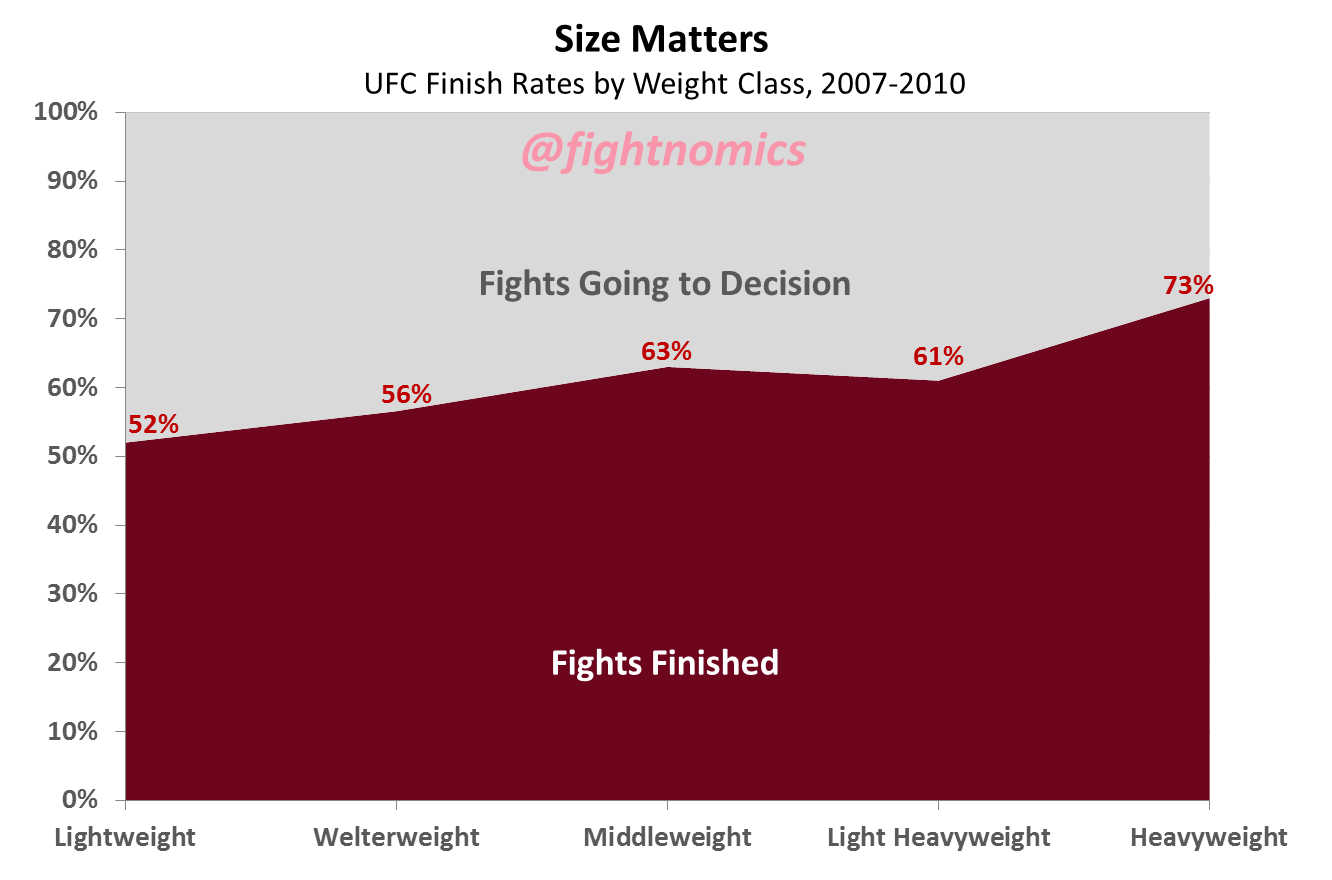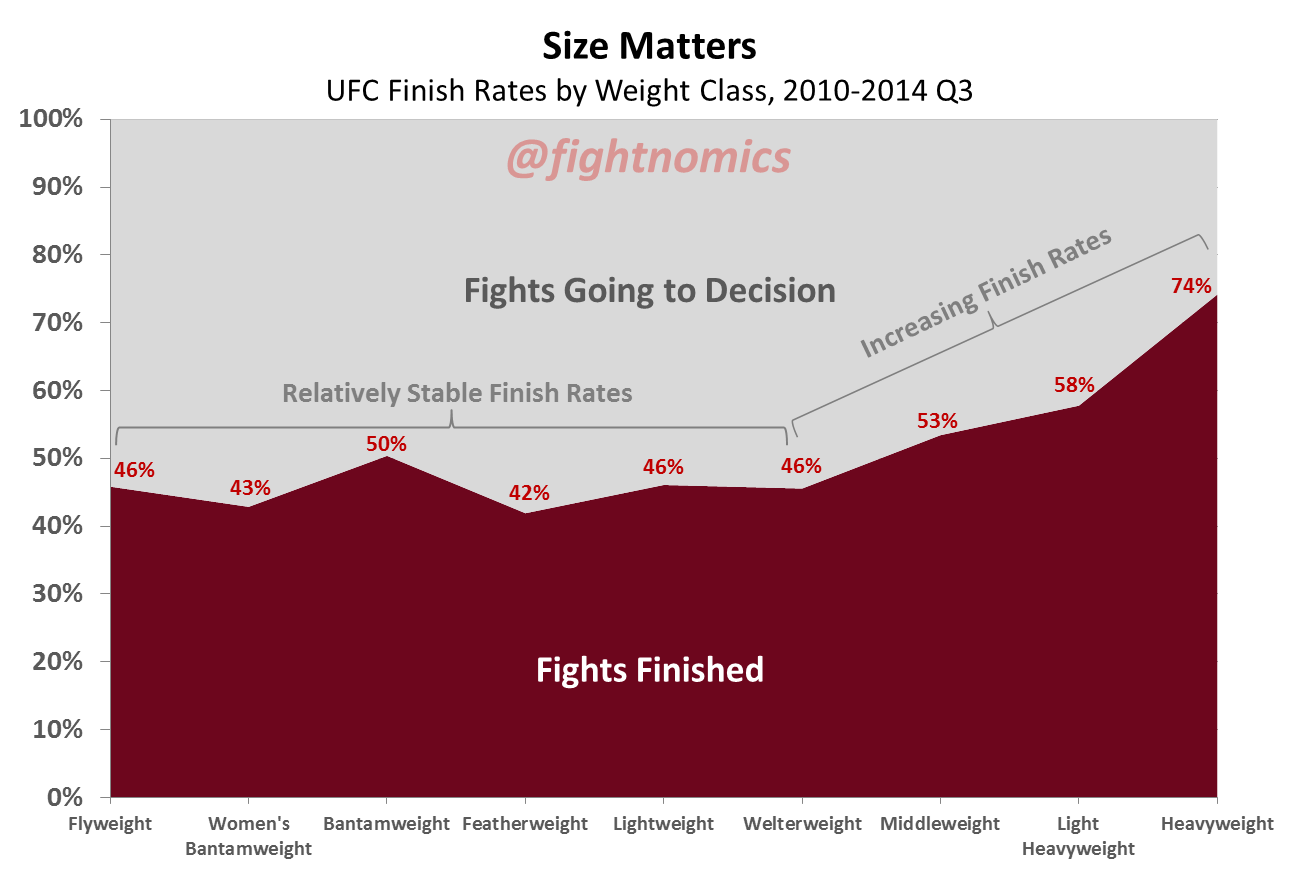By @fightnomics The trend that bigger fighters finish more fights has been known to MMA fans for a long time. But it was also born of a different era. When the UFC finally merged the smaller WEC divisions, and then soon after added Flyweights, we just assumed that the trend would extend down to lower weights. The lighter the fighter, the more likely they will see the cards the common wisdom went. Here’s a graph from several years ago. There appears to be a relatively stable upward trend within finish rates and weight. Hidden within those finish rates are significantly increasing T/KO finishes with size, and decreasing submission finishes. Overall, the increased KO power of the bigger fighters trumped the drop in submissions, and overall the bigger they were the fewer decisions they saw. It wasn’t a matter of styles, just physics.
For more on the details of historical finish rates and the nuances MMA statistics get the book “Fightnomics” at Amazon.
Fast forward to the UFC in 2014. Like sand through the hour glass, hundreds of fighters have come and gone, and fights are happening at a dizzying pace compared to the late 2000’s. The promotion has just added a 10th weight division (the second women’s division), and just have to crown a champion in December to solidify yet another title to put at stake a couple times a year. The sport has continued to evolve, just as much as the business of MMA has changed over the years. Fights still air monthly on pay-per-view, but now also pop up on primetime FOX, or are available online with a subscription service live from Macau or Sweden, or just searchable for viewing from a fight library. The sport of MMA has changed drastically in its short lifetime, and how we watch it may be the biggest change of all. So it’s high time we revisit some of the old truths about the sport. Just as sure as the Brazilian submission specialists dominated the early years, modern Mixed Martial Artists are now stylistically cross-trained, elite-level athletes. But what about our long-standing underlying trend of finish rates and weight class? With several years of new data to examine with the new small divisions under the UFC umbrella, we can finally test whether or not the trend would hold true. Perhaps the critics of small divisions would be proven right, that smaller fights lack power and aren’t exciting to watch. Or maybe we’ll see something else.
For more on the details of historical finish rates and the nuances MMA statistics get the book “Fightnomics” at Amazon.
Well surprise, surprise. It turns out that there is a floor to finish rates for fighters and their divisions, and really the divisions are all relatively similar from Welterweight on down. It’s a bumpy line, and some divisions see more knockouts than submissions or vice versa. But the fact remains, that isolating the smallest six divisions and examining just the variable of finish rate reveals that there isn’t much of difference. There will be more on the subject of finish rates in the coming months, but this high-level view of how UFC divisions finish fights should actually be contrary to some popular opinions. There are nuances within this, like how the Bantamweights finish more fights by submission than anyone else, or that the Flyweights and Women’s Bantamweights finish more fights by T/KO than the Bantamweights, the Featherweights, and even the Lightweights. So before anyone claims that one division in particular lacks finishing potential, think again. Except for the three largest divisions, most fighters finish at the same rate. “Fightnomics” the book is now available on Amazon! Follow along on Twitter for the latest UFC stats and MMA analysis, or on Facebook if you prefer.

